SLC21/WK6: Understanding Burns: Types, Causes, and First Aid Responses
Designed With Canva.
It is always a joy for me whenever I have the opportunity to participate in the Steemit contest weekly and today I will be participating in the crypto academy community contest. Stay tune below.
Write a detailed first aid response for the following scenario: " You witness a child accidentally spilling hot tea on their arm. What immediate steps will you take? What actions will you avoid? Include considerations for burn severity and explain your reasoning. "
When it comes to this type of scenario, I will definitely follow five steps to make sure that I attend to the immediate situation at hand which I will break down below.
Step 1: Safety Is First Of All Achieved.
I will first of all make sure that I remove that particular child from that burn area calmly so that there will not be any further danger due to heat.
Then I will instantly work on preventing any further injury for the child by paying attention to either the child cloth whether it is still hot. I will remove the child cloth on him or her so that there will not be any further burn.
Step 2: Cool the Burn
- What I will do next is to work on cooling down the affected area and I will do that by putting the burned arm inside the water for around 15 minutes soo as to cool the burn.
- According to my research, I discovered that I need to avoid using cold water or even ice so that it will not damage the skin any further.
Step 3: Assess the Burn Severity
- I learnt that burns are in level and so if I can check out the level of the burn whether it has still in the first degree burn, second degree burn or third degree burn so that I will know what next I will apply to treat the burn based on the degree of the burn.
Step 4: Protect the Burned Area.
- Then I will work on protecting the burned area either by covering the burn but it will be done in a loose manner. I will find a bandage most preferably to do that.
Step 5: Seek Medical Attention
- Then I will continue to monitor the burn for it to heal if the burn is not a third degree. I mean if it is minor. But if it is a major burn like third or even second degree burn, then medical help will be needed.
Actions I will Avoid.
The first action I will avoid is that I will not apply oil or ointments that burned the area of the skin because I discovered it will worsen the burn the more.
I will also not break the blisters that might want to form on the skin.
I will also avoid using ice or cold water like I said earlier.
Then if it is a severe burn, I will seek medical attention instantly.
Considerations for Burn Severity
Well for the minor burns which are always called the first degree burn, it can be treated at home either by cooling.
For the second degree burn which is always called the moderate burns, i can address it but it will require more professional treatment for healing.
Then when it is a third degree burns which is also called the large burns, emergency care will be needed.
Reasoning
Explaining my reasoning, I will make sure I cool the burn and the reason is because it can rescue the damage of tissue that might want to happen.
I will also cover the area affected and why I want to cover it is because to prevent infection
Then lastly, I will recommend medical attention and the reason is because if the case is so severe.
Q2: "A worker in a warehouse suffers an electrical burn after touching exposed live wires. The burn site shows entrance and exit points, with damage to the skin and underlying tissues. What are the immediate first aid actions you should take, and what critical steps should you avoid? How does this differ from treating thermal burns?"
When it comes to these types of electrical burn incidents, there are actually some steps I will take which I want to establish below.
Step 1: Making Sure The Scene Is Safe.
- I will make sure that the scene is safe and that I will ensure by turning off the power source so that there will not be any further injury to the victim. Not only that I will at that particular time call for emergency help because most of the time, electrical burns always cause internal injuries.
Step 2: Checking the Victim’s Condition.
- The next thing I will do is to check the victim condition by checking the victim Responsiveness level whether he or she is still breathing, if I notice the victim is not breathing, I will start CPR instantly and then make sure that I stabilise the victim.
Step 3: Treat the Burns
- The next step I will carry out is for me to start treating the burns and that I will start doing by first of all identifying the entrance and the exit wounds. Then I will move to cooling the burns and which will now lead me to cover the wounds if necessary to prevent any further infections.
Step 4: Monitor for Shock
- The next step I will do is for me to start monitoring the shock. I can pay attention to the symptoms and while doing so, I will also make sure that I continue to keep the victim warm and comfortable and why I will do that is to maintain the victim's body temperature.
Step 5: Await Emergency Medical Assistance
- Then lastly, I will wait for the emergency medical assistance so that I can give them any other information they want concerning the victim condition and so they can continue from there.
Critical Steps to Avoid
- There are some critical steps I will avoid and the first is for me to not touch the victim until I make sure that the power source have been turn off and the reason is that I should not become the victim also by electric shock.
Just like the first case, I will also avoid applying ointments because it can cause infection.
Then I will be careful on how I move the victim so that more damage will not be caused.
Then I will make sure I did not make use of ice or cold water to cool the burns.
Key Differences Between Electrical and Thermal Burns
There are some differences between the electrical and the thermal burns which I want to point out. The first is the nature of injury. Thermal burn always cause damage to the skin while electrical burn cause internal injuries.
For electrical burn, it requires instant evaluation medically while for thermal burn, it can still be handle by first aid treatment.
Lastly, for the electrical burns, it can leads to internal organ damage and in fact sometimes can lead to cardiac arrest while for thermal burns, it can leads to dehydration.
Q3: "A worker in a factory accidentally spills a strong acid on their arm, causing immediate pain, redness, and blistering. A colleague tries to wash it off with water but notices the burn spreading." a. Identify the type of burn. b. What went wrong during the initial first aid? c. Propose the correct first aid steps and explain why each step is important..
For this scenario, it is obvious that it is an acid burn scenario and which I will be talking about below.
a. Identify the Type of Burn
- Well, for this type of incident and since it is an acid burn scenario, I will say it is a chemical burn. And the chemical burn was caused by that strong acid poured on that person skin. All the further symptoms that were pointed out like the blistering, redness and also the immediate pain also shows that there was damage caused to the tissue and that might be because of the strong acid impact on the skin.
b. What Went Wrong During the Initial First Aid?
Well, talking from what went wrong during the initial first aid, there are some things I will notice. The first is that there was insufficient rinsing in such a way that water is not always enough to wash away acid as that cannot remove the acid alone.
Secondly, I notice that the person did not make use of any protective measures so that leads to the burn spreading.
The last one was the acid nature was not even paying attention to before moving to action. The nature of the acid will determine how to treat the acid at the end of the day.
c. Correct First Aid Steps
When talking about the correct first aid steps, there are some steps I believe can be taken which I will talk about below.
Step 1: Safety Is Ensured.
- First of all, since it is an acid incident, I will protect myself first and then I will try to remove any other further contaminated clothes around so that the acid will not have contact with the skin again because it can lead to further skin damage.
Step 2: Flush the Burn Area
- Then I will make sure I flush the burn area and how I will do that is by rinsing the area with a lot of water for the affected area. This will help to remove the fluid and prevent any further tissue damage..
Step 3: Identify the Chemical
Then after rinsing the affected area, I will then identify the chemical so that I can know the nature of the acid, when I am able to know the nature of the acid, it will help me to know how to deal with it much more.
Step 5: Cover the Burn
- Then lastly, I will try to cover the burn area either with a bandage or even with a clean area and why I will do it is to prevent contamination while still waiting for the emergency or the medical team to arrive.
Step 6: Seek Medical Attention
- After I have finally follow all these steps, then I will contact the medical team to make sure that more professional treatments are given for the burn area.
You are a first responder in a rural area. Two people are injured in a house fire: Person A has a large area of third-degree burns but is conscious and calm. Person B has second-degree burns on both legs and is in severe pain. You can only help one person immediately due to resource constraints. Whom do you prioritize, and why? Support your decision with medical and ethical reasoning.
It will really be a very difficult choice to make because both of them needs my attention but for decision sake, I will definitely prioritise Person B which is the person with the Second degree burns as it were. These are my reasons below;
Medical Reasoning
- First of all, talking from the survivability aspect, the person with the third degree burns which is the Person A have a very severe burn and so will need more further medical and professional care to survive as it is now severe. But for the Person B which is the second degree burns, even though it is severe but not severe as the Person A and so first aid box can still be prescribed for the Person B much more than the Person A. In other words, medically, Person B have a better survival chance much more than the Person A.
Ethical Reasoning
- Talking from the ethical point of reasoning, I will believe treating the Person B will give me a better outcome since he has the highest survival chance even with first aid compared to the Person A. Not only that, Person B severe pain can still be minimised compared to the Person A. Generally, Person B will be a better option to consider for ethical reasoning compared to the Person A.
Create an infographic on burn management. Include the following: a. Types of Burns and Their Causes (Electrical, Thermal, etc) b. Different types of burns (1st, 2nd, and 3rd degree) c. First aid steps for minor and major burns d. What NOT to Do During Burn First Aid." Use visuals and short explanations for each point.
Wow, it will be a whole lot of infographics that I will be making below which I want to describe.
Types of Burns and Their Causes
Different Types of Burns
First Aid Steps for Burns
For Minor Burns
For Major Burns
What NOT to Do During Burn First Aid.
Thank you for this lecture, looking forward to more interesting and benefiting lectures in the more weeks to come
I invite @josepha , @newekemini5 and @okere-blessing to drop a very constructive comments on this post and also to participate in this contest.
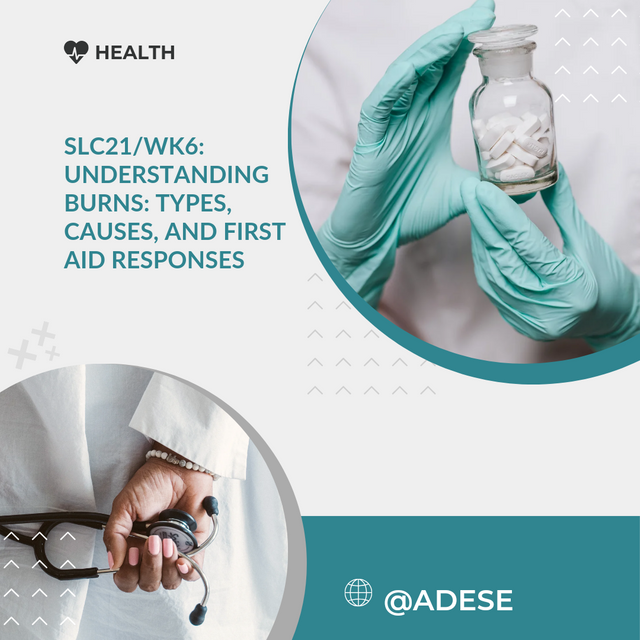

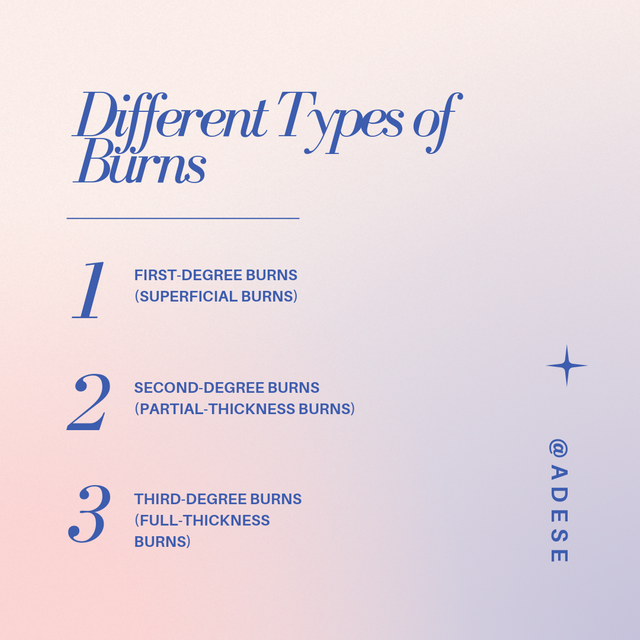
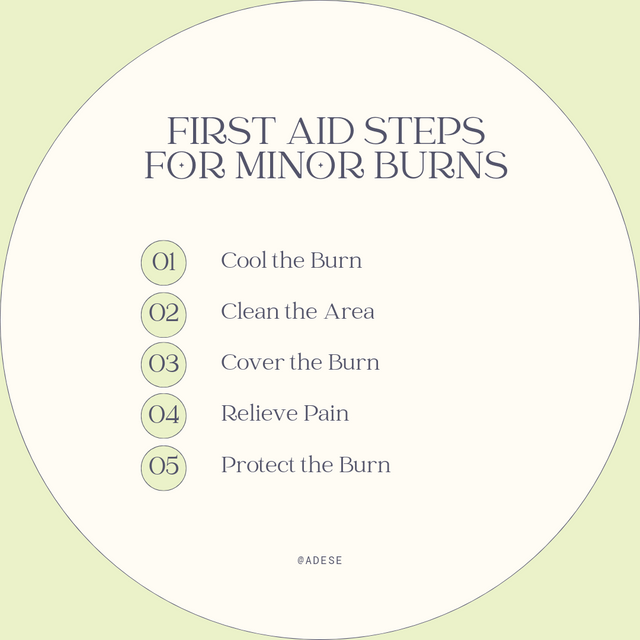
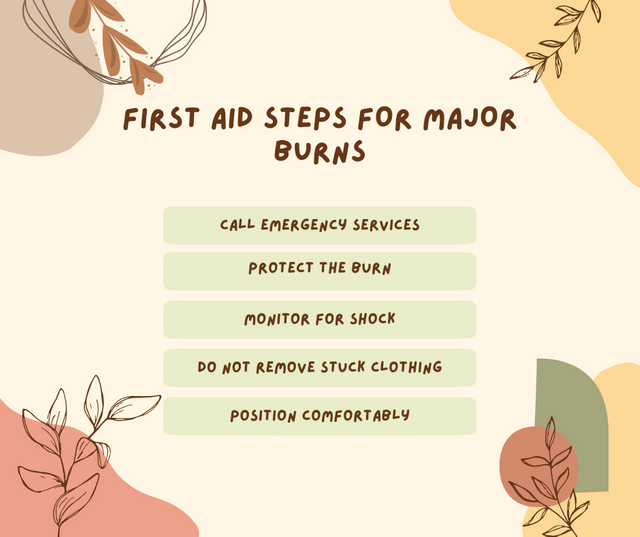
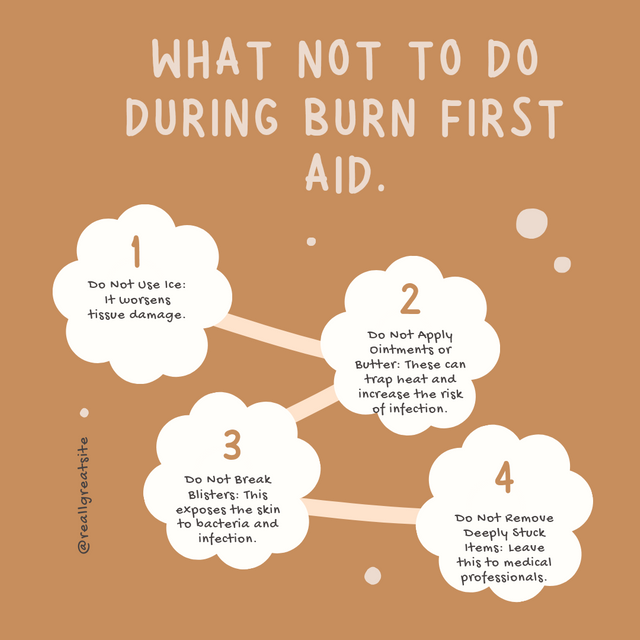
https://x.com/adenijiadeshin7/status/1864375394662572302?t=WzFLmcVu1lMVbvG8ZqejcA&s=19
Thanks for the invite sir. I wish you good luck.
Student Name: @adese
Overall grade: 9.1
Plagiarism Check: Pass
AI Use: No
General Feedback: The student has shown a good understanding of this week's course. There were a few shortcomings which I'm sure will be avoided in the upcoming posts.
Thank you.
Regards,
@huzaifanaveed1